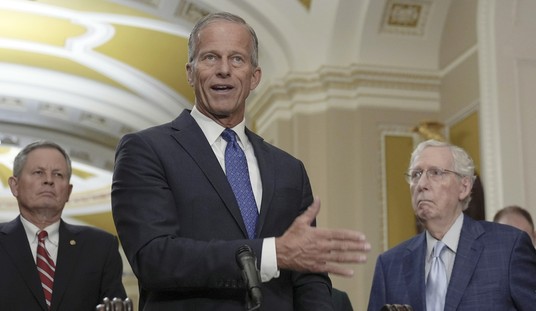Few congressional observers ever expected that U.S. Senators Dianne Feinstein (D-CA) and Pat Toomey (R-PA) would cosponsor the “Corn Ethanol Mandate Elimination Act,” to abolish the corn ethanol Renewable Fuel Standard (RFS), which requires that increasing volumes of this biofuel be blended into gasoline. Their collaboration again proves the adage that politics often makes strange bedfellows.
The RFS was a mistake when enacted ten years ago. Since then, despite attempts to curtail it, the program has expanded and had more lives than Freddy Krueger. Perhaps the senators are now paraphrasing William Shakespeare and Marc Antony, saying “I come to bury the ethanol RFS, not to praise it.”
Renewable fuels advocates are predictably fighting back. They say ethanol is vital to agricultural sector jobs and revenues, “homegrown fuels” diversify our energy mix and reduce foreign imports, and biofuels help prevent “dangerous manmade climate change.” The claims do not withstand scrutiny.
Ethanol has already “hit the blend wall,” the senators point out. Even current ethanol production mandates result in more ethanol than can be used safely in gasoline. That and fewer miles driven of late means refinery “blend targets” have already been met for E10 (10% ethanol) gasoline. More ethanol would impair automotive engine systems and void warranties. All this results in surplus ethanol, increasing corn grower demands for E15mandates or permits (15% ethanol), and worse market and ecological effects.
And still federal law requires that the ethanol mandate must keep rising: from 9 billion gallons of ethanol in 2008 to 14 billion now and 36 billion gallons by 2022. That would exacerbate all these problems.
America is already plowing an area larger than Iowa to grow corn for ethanol, and turning nearly 40% of all its corn into ethanol. The guaranteed income incentivizes farmers to take land out of wheat and rye, conservation easements, pasture land and wildlife habitat – and grow corn instead. Converting these vast fields of corn into ethanol requires enormous amounts of irrigation water, fertilizers, pesticides, and gasoline or diesel fuel to grow, harvest and ship the corn … and more gasoline, diesel and natural gas to produce and transport the ethanol.
Recommended
Corn growers make money, since they are protected by annual ethanol blend mandates that guarantee a demand, market and high price for their output. But there is no comparable “renewable protein standard” to guarantee a market for statutorily mandated quantities of poultry, pork, beef, eggs and fish.
Thus U.S. corn prices skyrocketed from $1.96 per average bushel in 2005 to as much as $7.50 in autumn 2012 and $6.68 in June 2013, before dropping in 2014 due to record yields and lower demand for corn and ethanol. Since the RFS was implemented, feed costs for chicken, turkey, egg and hog farmers have been nearly $100 billion higher than they would have been in the absence of the RFS, National Chicken Council president Mike Brown estimates.
These protein farmers have been compelled to subsidize corn farmers by almost $1.35 per gallon of ethanol; beef and dairy farmers have been forced to pay similar subsidies. All these costs have been passed on to American families. Since 2007, high and volatile feed costs forced many meat and poultry producers to cut back or cease production, file for bankruptcy or sell their operations to other companies. Biofuel mandates also meaninternational aid agencies must pay more for corn and wheat, so more starving people remain malnourished longer
Energy per acre of corn is minuscule compared to what we get from oil and gas drilling, conventional and hydraulic fracturing (fracking) alike. Moreover, corn-based ethanol requires 2,500 to 29,000 gallons of freshwater per million Btu of energy, the US Department of Energy calculates; biodiesel from soybeans consumes an unsustainable 14,000 to 75,000 gallons of water per million Btu. By comparison, fracking requires just 0.6 to 6.0 gallons of fresh or brackish water per million Btu of energy produced.
New seismic, deepwater drilling, hydraulic fracturing and other technologies have led to discoveries of enormous new reserves of oil and natural gas – and enabled companies to extract far more petroleum from reservoirs once thought to have been depleted. All these newly abundant oil and gas supplies could easily replace ethanol and other biofuels, and slash U.S. oil imports even further.
This resurgence of hydrocarbons has obliterated the Club of Rome “peak oil” notion that we are rapidly exhausting the world’s petroleum, made Big Green environmentalists apoplectic, and caused resource depletion alarmists to make a 180-degree policy turn on natural gas. Just four years ago the Sierra Club used $75 million from Aubrey McClendon and Michael Bloomberg to finance an anti-coal campaign which insisted that coal-fired power plants could be replaced with natural gas facilities.
Now the Sierrans despise natural gas and want to totally ban the technology that created our newfound abundance of gas: hydraulic fracturing. They disregard the benefits of lower gas prices for families and factories, ignore the need for coal and natural gas-based electricity as backup power generation for wind and solar facilities, and concoct all kinds of fanciful “dangers” from fracking operations.
Meanwhile, the prominent environmental think tank World Resources Institute just issued a new report that concluded: turning plant matter into liquid fuel or electricity is so inefficient that it is unlikely to supply a substantial fraction of the world’s energy demand – ever. Perhaps worse, spending countless more billions on this misguided strategy will result in more millions of valuable, fertile acres being devoted to “growing energy” instead of helping to feed malnourished and starving people.
Adding to the reasons the RFS deserves an F on its report card, ethanol gets 30% less mileage than gasoline, so motorists pay the same or more per tank but can drive fewer miles. It collects water, gunks up fuel lines, corrodes engine parts, and wreaks havoc on lawn mowers and other small engines.
Ethanol production also kills marine life.Much of the nitrogen fertilizers needed to grow all that corn gets washed off the land into waterways that drain into the Gulf of Mexico, where they cause enormous summertime algae blooms. When the algae die, their decomposition consumes oxygen in the water – creating enormous low-oxygen and zero-oxygen regions that suffocate marine life that cannot swim away.
Regarding jobs, the Bureau of Labor Statistics defines “green jobs” as any that make a company “more environmentally friendly.” The BLS even includes people who drive pilot natural gas, biofuel or hybrid buses. The Solar Energy Society includes accountants, lawyers and landscapers involved even part time with making or installing solar panels. One suspects that even burger flippers could qualify as having green jobs, anytime they sell a meal to a truck driver who happens to be hauling corn to an ethanol plant.
That brings us to “climate chaos” as a last-resort rationale for costly Renewable Fuel Standards. However, Climategate and other IPCC scandals clearly demonstrate that the “science” behind climate disaster claims is conjectural, manipulated and even fraudulent. And actual observations of temperatures, storms, droughts, sea levels and Arctic ice have refused to cooperate with computer models and Hansen-Gore-EPA-IPCC disaster hype and scenarios. The catechism of climate cataclysm – what blogger Jim Guirard calls the Branch Carbonian Cult – can no longer be allowed to justify misguided standards and subsidies.
About the only thing “green” about the ethanol RFS is the billions of dollars it takes from taxpayers and consumers – and funnels to politicians, who dole the cash out to crony corporatists, who then return some of it as campaign contributions, to get the politicians reelected, to perpetuate the gravy train.
It’s time to bury the RFS – and stop forcing motorists to buy gasoline that refiners are compelled to blend into motor fuels. Crony capitalist arrangements benefit too few at the expense of too many.

























Join the conversation as a VIP Member